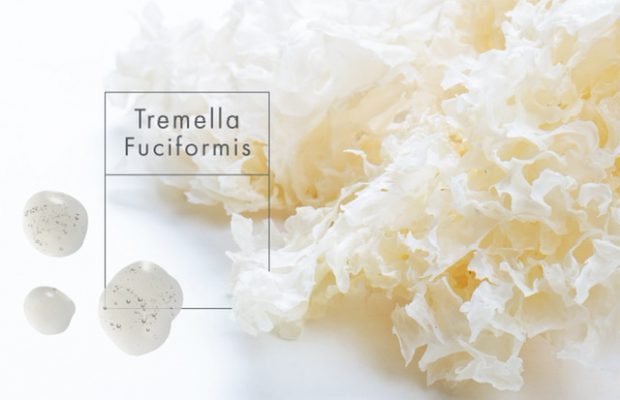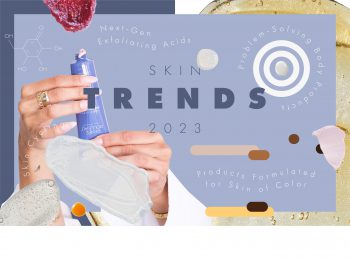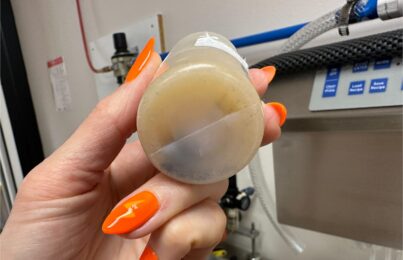As an esthetician with over 30 years of experience, I’ve seen countless skincare trends come and go. Many of them were short-lived; they created a lot of buzz for a little while. Others lasted long enough to become serious skincare staples in their own right.
That’s what’s happening with the latest trend to sweep through the industry—mushroom skincare. Yes, it’s just like it sounds…Now more than ever, brands are harnessing the power of mushrooms to formulate new and effective products. (This is a trend I predicted earlier this year, and it’s certainly proving true!)
While mushrooms have been used medicinally for thousands of years, we’re just starting to understand how they can benefit our bodies and our skin. In this post, I’ll discuss the various types of mushrooms that are commonly used in product formulations and how each one affects the skin. I’ll also explain why I think this is a trend with some serious staying power!
Why Are Mushrooms Trending Right Now?
I believe mushrooms are trending for a few different reasons. The first is that cosmetics trends, like clothing trends, are cyclical. Mushrooms were first introduced in mainstream skincare products about 30 years ago, so it’s only natural that they’d cycle back now. It’s just like how, if you keep your clothes long enough, they’ll eventually come back in style!
The second reason I think mushrooms are so trendy right now is that there’s a huge crossover happening between food, supplements, and skincare. Since mushrooms are found in so many supplements, it only makes sense that they’d make their way over to skincare.
Finally, people seem to be becoming more and more interested in alternative medicines. As I said before, mushrooms have been used medicinally for thousands of years. Now, people are wondering, “If these mushrooms are good for my body, what can they do for my skin?”
What Are The Health Benefits of Mushrooms?
Tero Isokauppila is the founder of the functional foods company Four Sigmatic, which specializes in mushroom-based products. He says mushrooms can benefit the body in many different ways. “Mushrooms can help support your immune system, stress management, gut health, athletic performance, and glowing skin. One of the main reasons for this is that fungi and animals have common ancestry and we share up to 50% of our DNA. This makes us very preceptive to mushrooms in our bodies.”
According to Isokauppila, all functional mushrooms are adaptogens, which means they help the body adapt to stress. “This is huge for overall health and wellness, as well as for your skin,” he says. They also provide basic nutritional benefits, being high in vitamins B and D. “Compared to other supplements or vitamins, there isn’t a toxic upper limit with functional mushrooms and they are safe for long-term use. In fact, you’ll see the most benefits with consistent long-term use,” he says.
Mushroom research is at an all-time high. Thanks to advancements in science and technology, we’re just starting to understand how they can benefit our skin. There’s still a lot of research to be done, especially since there are thousands of mushroom species out there, but the research that we do have is very promising!
How Can Mushrooms Benefit My Skin?
Generally speaking, all mushrooms have a bit of the same chemistry to them. They are composed of polyphenols, which are really potent antioxidants. They also have triterpenes, which help reduce inflammation, and complex polysaccharides, which are excellent humectants that form a flexible film over the skin to attract water and make it feel smooth to the touch. This combination—polyphenols, triterpenes, and polysaccharides—makes mushrooms really powerful skincare ingredients.
That’s not even to mention the vitamins and other biologically active compounds that we’re just beginning to discover and study. Specific types of mushrooms have even been shown to strengthen the skin’s immune system and provide anti-wrinkle effects. Cool, right?
What Types of Mushrooms Are Used in Skincare?
There are nine types of mushrooms I commonly see used in skincare products. The most common of these are silver ear mushroom (also known as the snow mushroom or tremella fuciformis), reishi, and shiitake. These seem to be the most popular because they’re readily available and they’ve been studied extensively.
Keep scrolling to see all nine and learn how each one can benefit the skin.
1. Tremella Fuciformis
Also known as the silver ear mushroom or the snow mushroom, this is by far the most common mushroom skincare ingredient. It’s famous for its high polysaccharide content. More specifically, it has a high content of mannose, xylose, and glucuronic acid, which act as humectants. They also provide film-forming activity to make the skin feel soft and smooth.
This mushroom is often called “the natural hyaluronic acid,” since it can hold up to 500 times its weight in water (that’s why it’s one of my favorite hydrating ingredients to formulate with!). According to one study, tremella fuciformis, when used at 0.05%, provided better moisture retention than 0.02% hyaluronic acid. I love that it offers additional benefits, too. Studies show tremella fuciformis can offer antioxidant, anti-inflammatory, and anti-aging properties. Perhaps that’s due to this extract’s polyphenol and flavonoid content, which are known antioxidants.
Recommended Products: Skin Correcting Serum and BHA Clarifying Serum
2. Reishi
Reishi (or ganoderma lucidum) is often an ingredient of smoothies and supplements, which is why it’s one of the most recognizable mushrooms on this list. It’s well researched and has a long history of use in Traditional Chinese Medicine, in which it’s referred to as “the mushroom of immortality.”
It’s high in polysaccharides as well as something called ganoderic acid, which can reverse collagen degradation and address cellular damage. It can even help with dark spots since it helps decrease melanin concentration. Thanks to its beta-glucan content, reishi can also provide anti-inflammatory benefits.
3. Shiitake
Shiitake (or lentinula edodes) is also widely used in Traditional Chinese Medicine, and it’s referred to as “the elixir of life.” It can address dark spots and discoloration, probably because of its naturally occurring kojic acid, which is a known skin brightener. It can also provide powerful antioxidant and anti-inflammatory benefits since it contains ergothioneine and beta-glucan.
4. Maitake
Maitake (or grifola frondosa) grows in the wild in the mountains of Japan. It’s not very prevalent in skincare formulas in Europe and North America, perhaps because it’s not as readily available as other mushrooms. Like the other mushrooms on this list, it’s high in beta-glucan, which provides an anti-inflammatory benefit.
5. Fomes Officinalis
This mushroom is found in Eastern Europe and grows on the trunks of conifer trees. It was used medicinally for a very long time thanks to its astringent properties that come from a high agaric acid content. We now use it topically, and these same astringent properties can help minimize the appearance of pores while reducing oil production.
6. Coprinus Comatus
Found in Europe and North America, this mushroom is known for its skin brightening and anti-inflammatory properties. Like shiitake, it also contains the antioxidant ergothioneine (though coprinus comatus contains much more of it). Even though it can benefit the skin, it’s not commonly used in skincare formulations since it’s hard to work with. Once harvested, it immediately starts to decompose and lose its active content. After just a few hours, it will turn completely black and be unusable. Because of this, some manufacturers have special harvesting methods that allow them to extract the mushroom for use in cosmetics.
7. Chaga
Chaga (or inonotus obliquus) is becoming more and more popular as the mushroom skincare trend expands. Like reishi, it’s often consumed in supplements, although it offers some serious skin benefits when applied topically. Research shows that it can reduce redness and strengthen the skin barrier due to its high phytochemical content. Translation? It’s a good ingredient for sensitive skin types.
8. Northern Truffle
This mushroom, also known as albatrellus confluens, is sourced from Northern Europe. It contains powerful anti-inflammatory compounds, like grifolin, which may help inhibit pain receptors and reduce redness, sensitivity, and irritation in the skin. There’s a lot of interest in this mushroom for pharmacological applications as well as skincare.
9. White Truffle
The white truffle (or tuber aestivum) is another edible mushroom that’s being studied for its skin benefits. It’s sourced from Southern France and Northern Italy, and it has a high amino acid content that can effectively hydrate the skin.
The only problem with this mushroom (and the Northern Truffle, too) is that it’s a very expensive skincare ingredient. Truffles can’t be cultivated outside of their natural habitat, so they must be wild-harvested, which takes a lot of time, effort, and expertise. Plus, truffles are an important part of many cuisines, so they’re not as commonly used in skincare formulations.
Are Mushrooms Sustainable Skincare Ingredients?
As the skincare industry focuses more and more attention on sustainability efforts, it’s only natural to wonder about the effect of mushroom sourcing and cultivation on the environment. According to Isokauppila, the effect is quite minimal.
“Mushrooms are very sustainable,” he says. “They require small amounts of land/greenhouse space. They also help break things down in nature and restore harmony. Studies show picking mushrooms in nature, or not, has no impact on the number of mushrooms growing next season. So, buying both cultivated (ideally long grown) mushroom fruiting bodies and wildcrafted species is really good. Just avoid lab-grown mycelium products, which are grown on grains (rice or oats).”
The Bottom Line
The mushroom skincare trend shows no signs of stopping. Since they can do everything from soothing irritation to providing hydration and offering anti-inflammatory and anti-aging benefits, I think almost everyone can benefit from mushroom extracts!
Next, are waterless skincare products better for your skin and the environment?
References:
- Bhardwaj, Anuja et.al. (2019). Lingzhi or Reishi Medicinal Mushroom, Ganoderma lucidum (Agaricomycetes) Mycelium Aqueous Extract Modulates High-Altitude Induced Stress. International Journal of Medicinal Mushrooms. vol.21, doi:10.1615/IntJMedMushrooms.2019030648
- Venturella, Giuseppe et al. “Medicinal Mushrooms: Bioactive Compounds, Use, and Clinical Trials.” International journal of molecular sciences vol. 22,2 634. 10 Jan. 2021, doi:10.3390/ijms22020634
- Ma, Xia et al. “A review on the production, structure, bioactivities and applications of Tremella polysaccharides.” International journal of immunopathology and pharmacology vol. 35 (2021): 20587384211000541. doi:10.1177/20587384211000541
- Liu, H.; He, L. Comparison of the moisture retention capacity of Tremella polysaccharides and hyaluronic acid. J. Anhui Agric. Sci. 2012, 40, 13093-13094.
Celebrity Esthetician & Skincare Expert
As an esthetician trained in cosmetic chemistry, Renée Rouleau has spent 30 years researching skin, educating her audience, and building an award-winning line of products. Her hands-on experience as an esthetician and trusted skin care expert has created a real-world solution — products that are formulated for nine different types of skin so your face will get exactly what it needs to look and feel its best. Trusted by celebrities, editors, bloggers, and skincare obsessives around the globe, her vast real-world knowledge and constant research are why Marie Claire calls her “the most passionate skin practitioner we know.”



